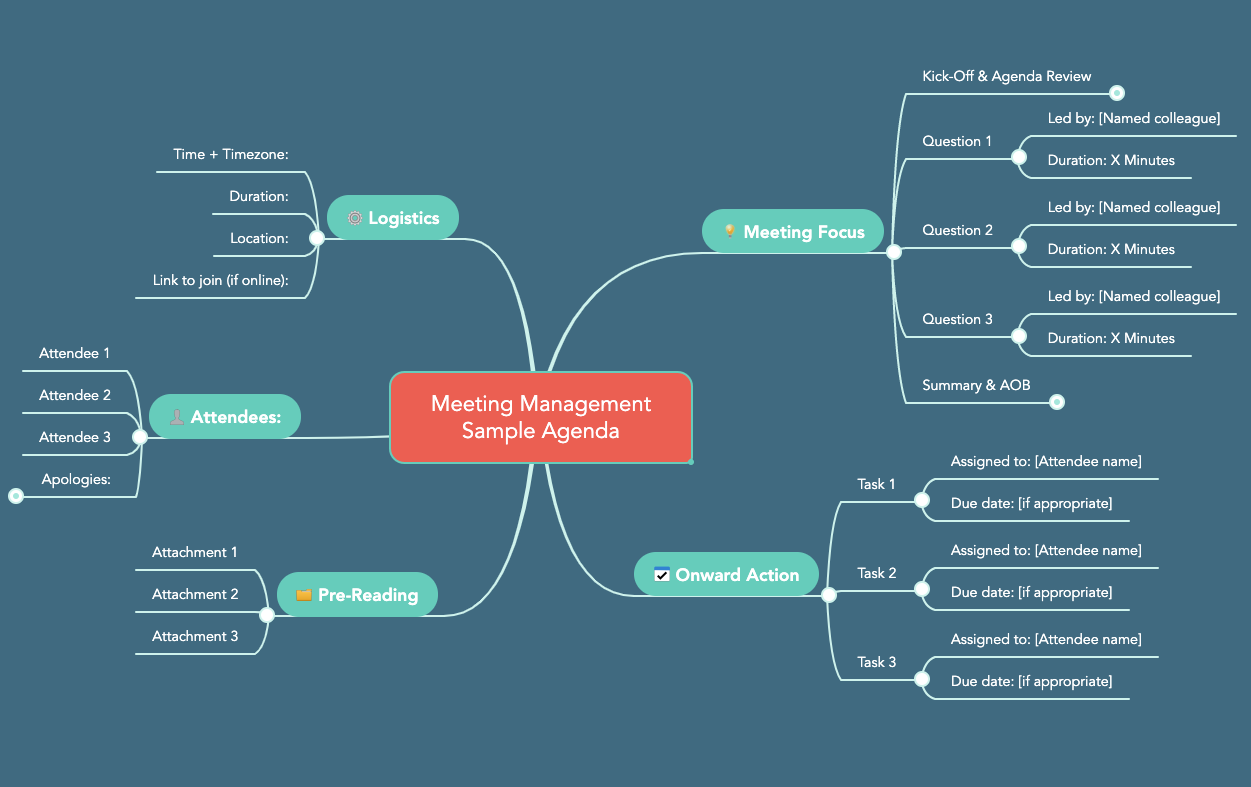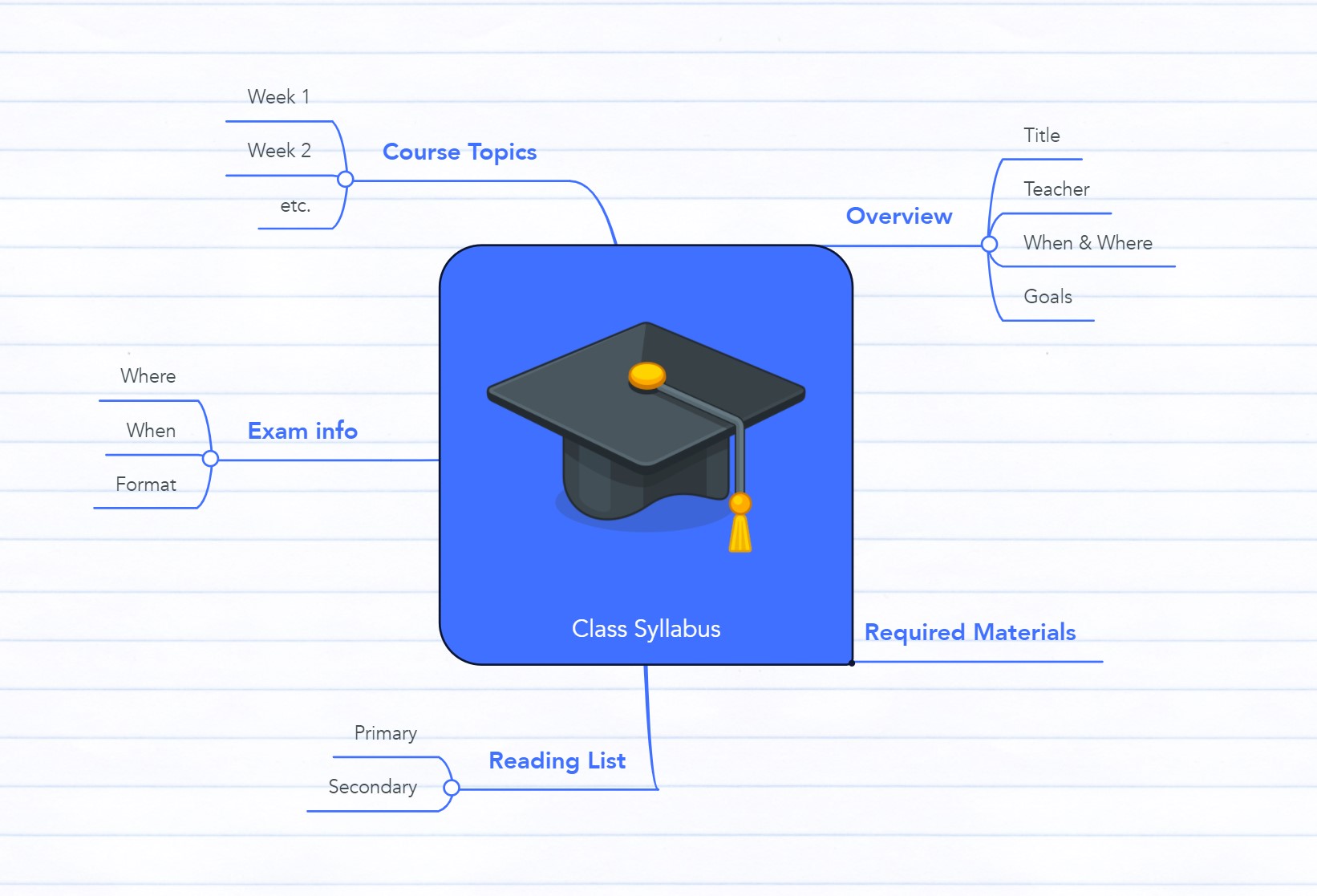Ideas matter. When the term “mind mapping” was coined by Tony Buzan on the BBC’s Use Your Head in 1974, the ways in which we take notes, brainstorm and study changed forever. We look at what makes this technique so special, which mind mapping technique you should choose, and what the benefits of mind mapping are.

Whether you’re mapping on paper, on a whiteboard or with an online mapping tool like MindMeister, you’re one of millions of professionals and students worldwide who benefit from this extraordinary technique. In this article, we’ve put together a short guide to the types of mind maps you can benefit from, alongside the main reasons why mind mapping is increasingly replacing other note taking formats in business and educational contexts.
In This Article:
Which mind map?
- The Buzan Method
- Spider and Bubble Maps
- The Best Mind Map for You
Why should I mind map?
- To structure information effectively
- To improve reading comprehension
- To boost productivity
- To inspire creativity
- To improve memory and recall
Which Mind Map?
Mind maps are graphical representations of information. In contrast to the traditional, linear notes you might make in a text document or even on paper, mind maps let you capture thoughts, ideas and keywords on a blank canvas. These ideas are organized in a two-dimensional structure, with the title/main idea always located in the center of the map for visibility. Related ideas branch off from the center in all directions, creating a radiant structure.
Despite these key principles, the fact that mind mapping has existed for almost half a century makes it inevitable that some divergence will exist when it comes to defining what a mind map actually is. Let’s look at the two key schools of thought.
The Buzan Method
In its purest form, and as described in this video from the late Tony Buzan himself, mind mapping is a particular technique that requires the following key elements to be effective:
- A central image, to stimulate memory, associations and thought processes
- Curvilinear branches, emanating from the central image, to depict the basic ordering ideas (BOIs)
- A (theoretically infinite) network of smaller branches to depict ideas stemming from the BOIs at different levels of detail
- Conscious use of color to separate ideas by topic
- A single keyword for each branch
As Buzan explains in the video, the rules behind his mind mapping technique were developed following extensive studies in the fields of neuroscience and psychology. Many purists argue to this day that his method remains the one true technique: a map without the elements above cannot be considered a “true” mind map.
Importantly, however, Buzan mentions that he uses his own learning experiences to ultimately gauge what is effective and what is not, which is why his method has been subtly adapted over time by like-minded enthusiasts.
Spider and Bubble Maps
Although the term is inextricably linked to Buzan, the modern definition of mind mapping is slightly broader and generally encompasses spider maps and bubble maps as well. These similar concepts are less-rigidly defined variations of the Buzan method above, differing in several key aspects.
Both spider/bubble maps and “Buzan” mind maps start from a single central topic, or two topics in “double bubble” maps. However, how the surrounding topics are presented is the crucial point of difference.
Rather than labeling the branches, spider/bubble diagrams use lines to connect ideas, displayed as “bubbles” around the central theme. These topics may also be further dissected into subtopics to provide detail and depth.
A key advantage of spider/bubble maps is that they provide mappers with the opportunity to link themes “cross-topic” rather than solely from the preceding branch. This fosters an overarching structure within the map and can show links between related subjects.
The Best Mind Map for You
When it comes to creating your mind map, the most important things to consider are what you need and how you learn best. Sometimes, you may not even need a mind map at all. While almost all mapping techniques were developed as an alternative to long-form text and linear notes, there are plenty of situations where linear note-taking is a perfectly suitable method.
Your needs and goals should also be considered when you decide how to create the mind map itself. While traditional paper mind maps are great for developing ideas by yourself, the development of online mind mapping tools has enabled millions of people to brainstorm and plan together in real time. It’s for this reason that MindMeister, our very own online mind mapping tool, features such an intense focus on collaboration and group work.
In terms of the “Buzan” map vs. spider map divide, MindMeister allows users to choose the structure that suits them best: taking the best aspects of both techniques to create a flexible tool that is perfectly suited for online collaboration. It also provides support for other diagram types, including org charts and project plans. You can read all about how to create attractive, intuitive maps in this excellent post.
Ready to start mapping? Sign up to MindMeister and create awesome mind maps for free!
Why Should I Mind Map?
The soul never thinks without a mental image.
There are many reasons why mind mapping is used by millions of professionals, creatives and students all over the world. Here are the top 4:
Mind maps structure information.
Mind maps can store and structure vast amounts of information. They display hierarchy, show relationships between individual ideas and enable you to see the “big picture” at a glance. These features also make mind maps an ideal tool to present information to others, create knowledge pools and solve complex problems.
Mind maps improve comprehension.
In both school and university education, mind maps have proved to be popular and effective learning aids. By structuring information in a way that is more compatible with visual learning styles, and by filtering long texts into shorter mind map topics, learners can absorb large amounts of information faster.
A 2013 study¹ published in the Modern Journal of Language Teaching Methods (MJLTM) examined how students in Iran reacted to mind mapping as a tool for learning English as a foreign language. From the sample group, 83.4 percent of students had a positive view of mind mapping in reading comprehension, while only 16.7 percent responded negatively. Tellingly, in a questionnaire issued after the study, the statement “When I use mind maps for a reading passage, I’m more able to solve post-reading activities” scored most highly.
Mind maps enhance productivity.
The benefits of mind mapping are not limited to education; they can be useful in a commercial sphere as well. Mind mapping enables you to learn faster, communicate more efficiently and brainstorm more effectively, which is why ever more businesses are using tools like MindMeister to get the most out of their teams.
Whether you’re planning a project at work or writing a scientific paper — mind mapping will help you save tremendous amounts of time. According to a survey by the Mind Mapping Software Blog, mind mapping software can increase productivity by an average of 23 percent.
Mind maps foster creativity.
Two things make mind maps the best brainstorming tool out there. One: The act of developing a mind map stimulates our brain like no other technique and fosters a creative flow of ideas. Two: Mind maps allow you to transcribe those ideas with incredible speed, making for a virtually frictionless thought organization.
During a 2004 study2 into the effectiveness of mind mapping for students’ writing assignments, 10 out of 12 people found that mind mapping improved their writing. Not only is it an excellent technique for students to prepare their essays and papers, it’s also a fantastic method for bloggers to outline articles and for authors to overcome writer’s block.
See also: 6 Tips to Improve Your Creativity
Mind maps improve memory and recall.
Mind maps present information visually. They feature several powerful mental triggers such as images, colors, shapes and connections, which help our brain process and memorize large amounts of information. Studies have found that mind maps can improve memory by 10-15 percent, others go even higher and estimate improvements of up to 32 percent³. Interestingly, students with learning difficulties such as dyslexia or high-functioning autism have reported that they find mind maps to be invaluable study aids.
Still not convinced? Maybe you’re right to be cautious. Check out the Top 7 Reasons NOT to Mind Map
1 Hariri, M. and Tahriri, A. (2014) “EFL Learners’ Attitudes Towards Using Mind Mapping Technique In Their Reading Comprehension”. University of Guilan, Modern Journal of Language Teaching Methods.
2 Wai Ling, C. (2004), ‘The Effectiveness of Using Mind Mapping Skills in Enhancing Secondary One and Secondary Four Students’ Writing in a CMI School’. University of Hong Kong, Masters dissertation.
3 Toi, H (2009), ‘Research on how Mind Map improves Memory’. Paper presented at the International Conference on Thinking, Kuala Lumpur, 22nd to 26th June 2009.



